 |
|
At The Picture Show
|
November 2006
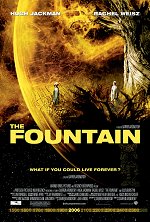
'The Fountain' runs deep
Flawed as it may be, Aronofsky's huge risks somehow still pay off
The Fountain
Warner Bros. Pictures
Director: Darren Aronofsky
Screenplay: Darren Aronofsky
Starring: Hugh Jackman, Rachel Weisz, Ellen Burstyn, Mark Margolis, Cliff
Curtis and Sean Patrick Thomas
Rated PG-13 / 1 hour, 36 minutes
Opened Nov. 22, 2006



 (out of four)
(out of four)
Darren Aronofsky intends for The Fountain to be timeless, but perhaps this wasn't
exactly the right time. We've grown cynical. Anything that goes for broke, we
seem to scoff at. Ditto any semblance of sentimentality, spirituality or any number
of other universal themes that may once have been commonplace.
At the same time, we've become accustomed -- too accustomed, probably -- to
convention. Even our fantasies lack imagination sometimes. They're easy to digest
and, too often, unchallenging.
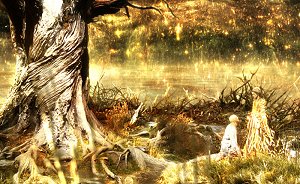 Which may explain the icy reception to
Aronofsky's long-gestating dream-project, The Fountain, a hugely ambitious,
flawed, yet beautifully realized endeavor that has been in the works for six years,
only to be met with bewilderment by audiences and critics alike. Not that the film's
critics don't have a point -- The Fountain is messy in parts and doesn't seem to
have enough meat in the center to justify its grandiose intentions about love, death
and, yes, even the meaning of life. Perhaps it's only natural that a movie like this
-- an experimental, historical, existential, sci-fi action romance that asks and
answers impossible but fascinating questions -- would polarize audiences. Some
see it as a masterpiece; others think it's a disaster. Internet critic Steve Rhodes said
it's one of the worst movies he's ever seen. Then again, Steve Rhodes is an idiot.
Others will no doubt put it at the top of their best-of-the-year lists.
Which may explain the icy reception to
Aronofsky's long-gestating dream-project, The Fountain, a hugely ambitious,
flawed, yet beautifully realized endeavor that has been in the works for six years,
only to be met with bewilderment by audiences and critics alike. Not that the film's
critics don't have a point -- The Fountain is messy in parts and doesn't seem to
have enough meat in the center to justify its grandiose intentions about love, death
and, yes, even the meaning of life. Perhaps it's only natural that a movie like this
-- an experimental, historical, existential, sci-fi action romance that asks and
answers impossible but fascinating questions -- would polarize audiences. Some
see it as a masterpiece; others think it's a disaster. Internet critic Steve Rhodes said
it's one of the worst movies he's ever seen. Then again, Steve Rhodes is an idiot.
Others will no doubt put it at the top of their best-of-the-year lists.
It's not that I don't understand the criticisms -- I do. It's just that I think many
critics are being far too dismissive of the movie. They see as overwhelmingly
confusing what is actually quite simple. They label it "pretentious" when in fact
it's much too earnest, and wears its sentimental heart too plainly on its sleeve, for it
to really deserve that label. And since when did it become a crime for filmmakers
to think big anyway?
One of the most interesting aspects about The Fountain, especially upon reflection,
is the way it tries to both think and feel at the same time. The majority of movies
try to do one or the other -- either play directly to the audience's emotions or
solely to the intellect. But with The Fountain, Aronofsky tries to connect on levels
emotional and philosophical, spiritual and cosmic.
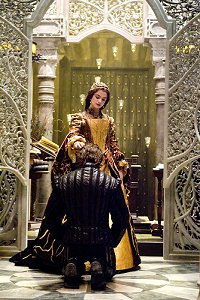 To do so, Aronofsky tells a story -- yes, one
story -- about a man who is basically trying to reconcile life and death. More than
likely the man represents Man itself and the intrinsic desire for immortality. The
story is split into three parts, all involving the quest of one man, Tom (Hugh
Jackman) to save the woman he loves, Izzi (Rachel Weisz). In the 16th Century, she
is the queen of Spain and he a humble conquistador charged to save the country
and discover the tree of life. In modern day, she is his wife and dying of cancer,
and he is a surgeon trying desperately against time to discover a cure. And 500
years in the future, as Tom floats in a bubble in outer space (conjuring images of
the Star Child in 2001: A Space Odyssey) with the Tree as his sole companion,
everything comes full circle.
To do so, Aronofsky tells a story -- yes, one
story -- about a man who is basically trying to reconcile life and death. More than
likely the man represents Man itself and the intrinsic desire for immortality. The
story is split into three parts, all involving the quest of one man, Tom (Hugh
Jackman) to save the woman he loves, Izzi (Rachel Weisz). In the 16th Century, she
is the queen of Spain and he a humble conquistador charged to save the country
and discover the tree of life. In modern day, she is his wife and dying of cancer,
and he is a surgeon trying desperately against time to discover a cure. And 500
years in the future, as Tom floats in a bubble in outer space (conjuring images of
the Star Child in 2001: A Space Odyssey) with the Tree as his sole companion,
everything comes full circle.
Perhaps some of the consternation comes from the structure of the narrative itself;
in my mind, the best way to understand it is to not try too hard to understand it --
to not try to piece together each segment of the plot as you would a traditional
storyline. There may be three different storylines in three different time periods,
but these are the same characters. Don't take it literally -- this is poetry, not prose.
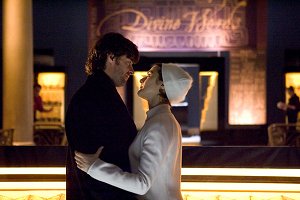 It would be a mistake to try to understand each
story individually. The three stories exist only in concert with one another -- or,
rather, they are all the same story. That's why Aronofsky's jumbling of the
narrative works so well. The three sections seem to be able to communicate
directly with, or even lead into, each other. Thematically, they are interchangeable.
It would be a mistake to try to understand each
story individually. The three stories exist only in concert with one another -- or,
rather, they are all the same story. That's why Aronofsky's jumbling of the
narrative works so well. The three sections seem to be able to communicate
directly with, or even lead into, each other. Thematically, they are interchangeable.
For evidence of just how vexing such a strategy is for people, look no further than
Richard Roeper's completely inane "critique" of The Fountain on last week's
Ebert and Roeper, which basically consisted of this (and I'm really not
exaggerating): "I didn't get it … I didn't know what was going on … that was
confusing … it was stupid, I didn't understand what was happening … I had no
idea what was going on … I didn't get it …"
Guest critic A.O. Scott actually had to explain things to Roeper that weren't hard to
figure out in the first place -- or certainly shouldn't be for a professional film
critic.
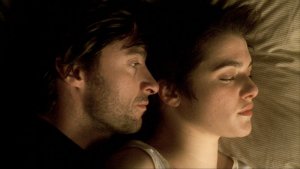 Scott didn't like the movie, either, but his
criticisms of the film actually made sense, and he actually came across like a
halfway intelligent human being.
Scott didn't like the movie, either, but his
criticisms of the film actually made sense, and he actually came across like a
halfway intelligent human being.
While it's true that many may exaggerate the film's quality simply because it's so
different (the same way some people automatically like a movie if it has a twist
ending), it's equally true that some seem to be blaming Aronofsky just for taking a
chance. And for -- gasp! -- daring to openly deal with love and sentiment. I love
to see filmmakers of Aronofsky's talent taking a chance. No, this is not Heaven's
Gate or The Bonfire of the Vanities.
The Fountain is a difficult film to discuss, except with one who has already seen it.
It's one that practically demands repeat viewings. There are a lot of different
factors in play here, and while they don't all work, we do get a strong sense of the
bigger picture once things begin to come together by the end -- and boy, do they
ever come together.
Literally.
You'll understand when you see it.
 There's a lot to take out of The Fountain, which is
why it is ultimately successful. It can be an emotional experience, or a thought-provoking one, or just a visually dazzling one. Indeed, Aronofsky and
cinematographer Matthew Libatique created a visual aesthetic so rich and unique
that, if nothing else, the senses are at least captivated. (The way the sections have
visual references to one another, and how the overall look of each segment
corresponds with the rest, is extremely interesting as well, but that's a whole
different article.)
There's a lot to take out of The Fountain, which is
why it is ultimately successful. It can be an emotional experience, or a thought-provoking one, or just a visually dazzling one. Indeed, Aronofsky and
cinematographer Matthew Libatique created a visual aesthetic so rich and unique
that, if nothing else, the senses are at least captivated. (The way the sections have
visual references to one another, and how the overall look of each segment
corresponds with the rest, is extremely interesting as well, but that's a whole
different article.)
Bottom line is, there's something real and substantive at work here. Aronofsky
originally envisioned the film as a $90 million epic a few years ago before studios
and cast members backed out. But he returned to the project, pared down the
material and created a smaller picture that nonetheless, he said, captured the
essence of his original vision. In that light, the finished product is made even more
interesting by what it could have been.
Indeed, the film could have benefitted from more screen time, which would have
given more weight to the characters and given Aronofsky more time to develop his
story, literally and thematically. Perhaps then the film's fantastical ending would
have had an even greater effect than it already does. The film runs just 96 minutes;
if it were, say, two hours long, we might really have something to sink our teeth
into. As it is, Aronofsky -- who previously directed Pi and the masterpiece
Requiem for a Dream -- has made something that, at the very least, is unlike
anything else that hit theaters all year.
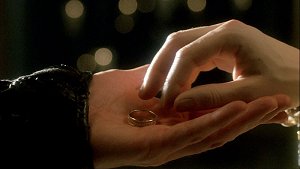 Read more by Chris Bellamy
Read more by Chris Bellamy